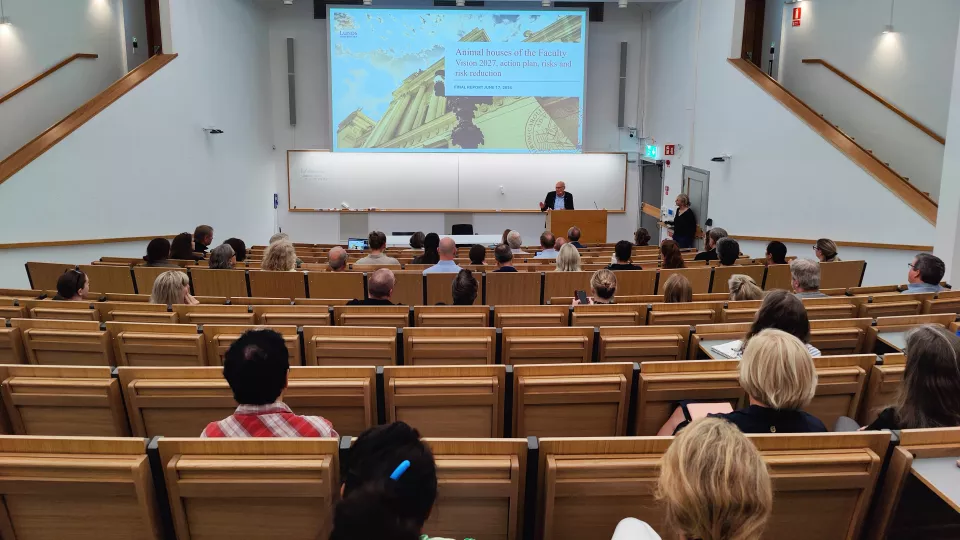According to the report, the challenge for the Faculty is a large over capacity of animal houses and a decline of animals in research from 8000 cages in 2013 to 4000 2023. The result is large costs for space, staff and operations. The expenses have led to reduced grants to departments, other infrastructures and new research positions.
“Animal experiments are important but they are too expensive today. If we don’t do anything, money will be taken from the departments which will lead to reduced funding and less money for cofounding, positions etc,” Bo Ahrén said.
Vision for 2027
The report’s vision for 2027 is that the animal research is cost effective and an important part of the Faculty.
- The budget for CCM is ≈90 mnkr
- User fees are lower than today
- CMU is used more
- Animal experiments are undertaken in laboratories at CMU, CRC and BMC
- CCM has staff with high competence that is dimensioned according to workload
- Staff at CCM assist researchers in animal research
- Close cooperation with the Faculty of Science
- Less Faculty grants and less ALF-money are required to cover costs for animal houses, OH is lower than today
"It will be challenging for researchers and staff in the research groups, but everyone will be affected in some way."
Action plans
To achieve this several actions were presented in the report:
- More acitivites at CMU (lower fees, one health zone, flex unit used by researchers and external parts)
- Reduced space at CRC (mice only, no investment in big autoclave)
- Reduced space at BMC
- Faculty leaves the animal house at MV
- Cooperation with Faculty of Sciences
- CCM (staff dimension adapted to number of animals and animal houses, administrative cooperation between CCM and the Faculty etc)
- Lower user fees (from 1 January 2025, basic fee of 10 000 for all groups, reduced fee for external users)
The next step is now to appoint a process leader and arrange workshops for planning. Decisions also have to be made related to CCM and to reduce the space used for animal houses, as well as reduced user fees..
The final report has been handed over to the dean.


